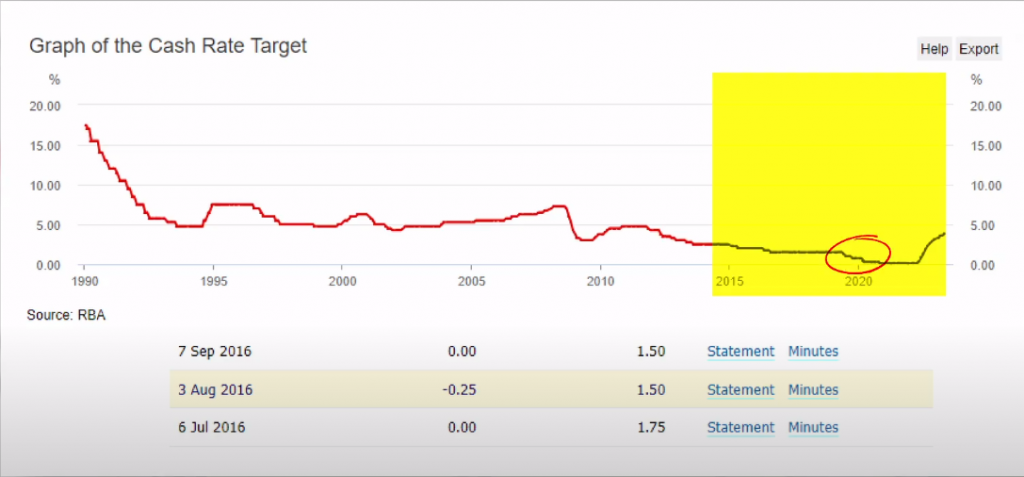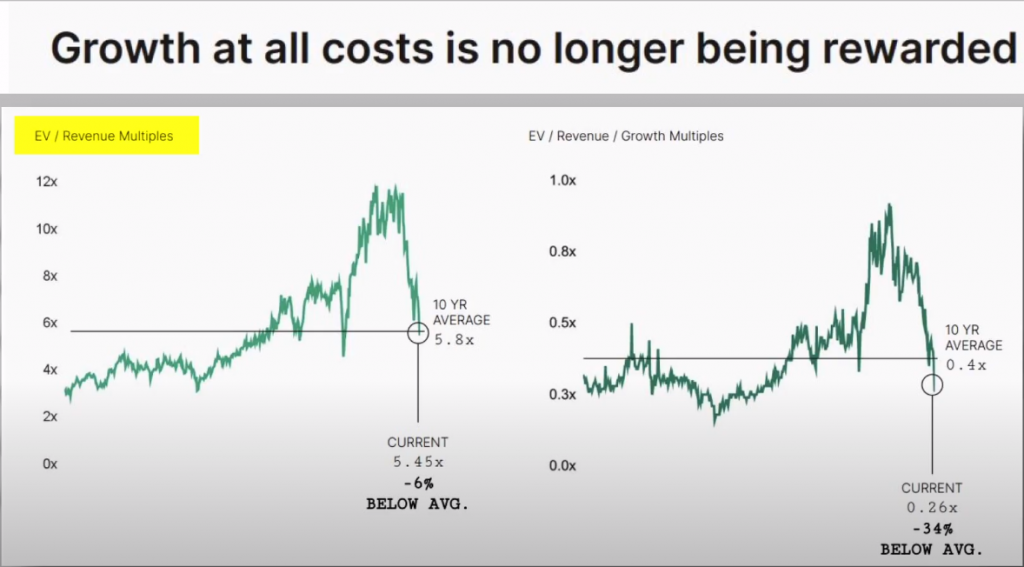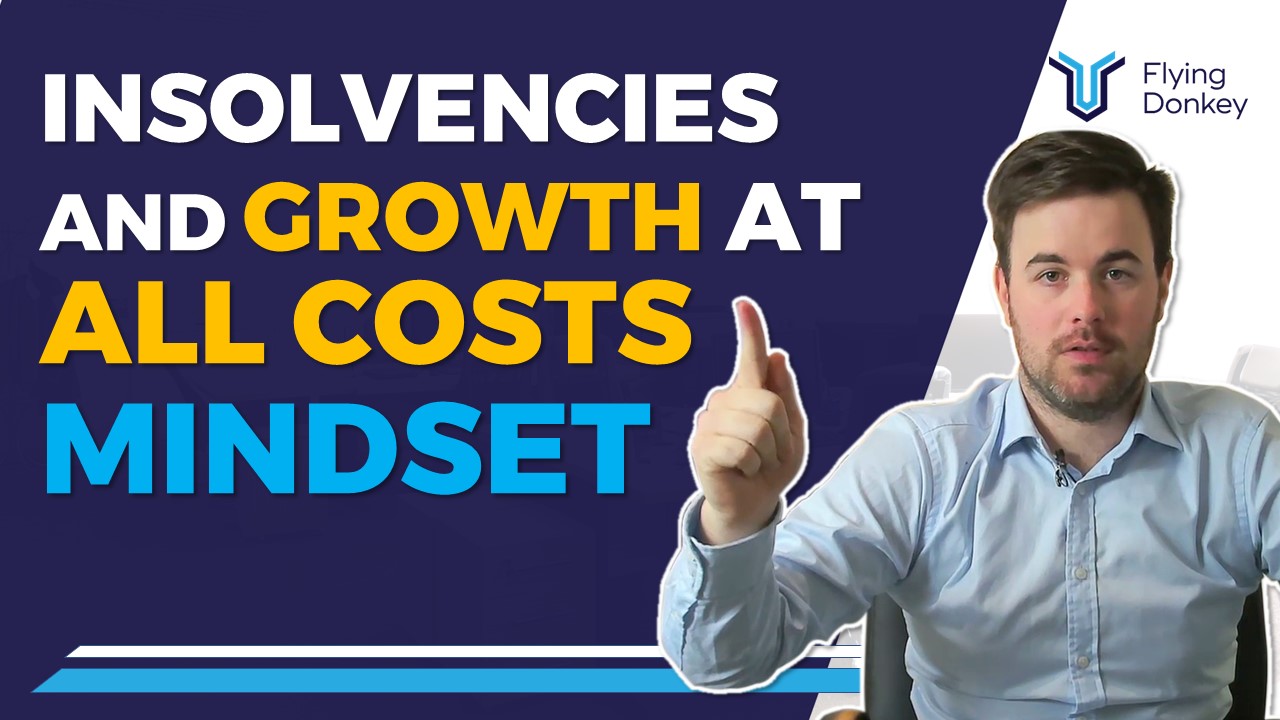It’s been a tough period for technology companies since there’s been a shift from a growth-at-all-cost mindset to a profit mindset.
This has forced insolvencies in a number of companies, and I’m sharing my thoughts on how this happens exactly, and what you can do as a software or SaaS company.
Near-Zero Interest Rates
I came across the following article, and I’ll summarize it in a bit.

Here’s what happened: we had a period where interest rates were extremely low.
Here’s what that meant:
Low Interest Rate = Money Is Cheap
Companies acquired so much money to try and grow at all costs, whether or not they were turning a profit.
The idea was:
- Get the money into the market
- Capture some market share
- Gain some returns for their investors
Investors were putting that money into a bank where there were near-zero interests.
However…
Interest rates have now climbed dramatically. As a result, the cost of capital has gone up. The companies haven’t been able to raise money — they then become insolvent.
Diving Deep
As we dig deeper into this article, I want to show why companies have shifted to a profit mindset and what the future looks like for them.
Let’s take a look at the following graph:

As you can see, there was a downtrend in interest rates from 2015 onwards. This was particularly evident when the COVID-19 pandemic started.
Interest rates essentially crashed to zero.
The options for investors to gain returns on their money weren’t great to say the least. Because of that, investors turned to technology companies that promised to return all of their money.
Here’s another graph for us to visualize what happened:

To quickly summarize: the graph shows an inverse relationship between enterprise revenue and interest rates.
As cash got cheaper, companies became more expensive.
This makes sense because the company’s valuation grows as more people put more (cheap) money into it.
In fact, the chart confirmed this: growth reached 10x to 12x at the peak.
However, there’s been an extremely sharp dropoff in growth.
Remember:
Rise in interest rates = higher cost of capital
When the companies went back to market to try and raise more funds, the total value of their businesses had decreased.
And generally speaking, no investor wants to put their money to a company that’s going backwards.
If you previously raised $100 million in valuation and came back to the market with a $50 million valuation, your investors will ask questions.
How long is this going to take? Am I going to get my money back? Am I even going to make money off of this?
If your company comes back to the market with an extremely steep drop in valuation, you can’t rate cash.
You become insolvent.
And that’s what we’re seeing from the above-mentioned companies.
Kevin Chiu, the co-founder of Catalyst Software, sums this up well in his LinkedIn post:

The Pivot to Profitability
Companies are now pivoting to profitability. Why?
Profitability gives you an infinite runway.
Think about it this way: when you’re raising capital, your runway is only as far as the money you’ve raised can take you.
Software companies have previously been growing at all costs. They spent huge money on development, features, and sales and marketing campaigns. They tried to capture market share, and they relied on their capital reserves to get clients onto their platforms.
But now…
They have to slow down or reduce their spending to pull their burn rate to zero. If they succeed, this would give them some semblance of profitability.
But what this means is slow growth. There’s going to be less demand in the market for software developers. And when you’re raising money, the growth metrics are less important than whether or not your company is close to being profitable.
This circles us back to the cost of capital.

If investors see that your company is profitable, then they’re more likely to invest in your business — because there’s a high chance of getting their money back. When this happens, your company is more likely to grow.
What Can Software Companies Do?
If you’re a software company that’s been in this situation, my recommendation is: be lean and get back to a profitable business.
That may mean:
- Cutting staff
- Cutting sales
- Cutting marketing spend
- Reducing feature sets
These steps may be necessary to bring your business back in line to being self-sustaining.

The reality is we don’t know how long this could last. It could be six months or six years. As I say in cricket, you can’t score runs from the sideline; you have to make sure you’re still on the pitch in three to four years when the market does tick up again.
Use Flying Donkey
Here at Flying Donkey we work on a number of SaaS products. We help companies build features, and we’ve seen a reduction in our existing clients’ feature sets. We’ve also seen a number of new approaches.
For example, clients have been adopting a new hybrid model where they reduce some of their internal staffing capacity and augment it with our services. They can switch this engagement on and off depending on their needs. They can build a certain feature with us for a couple of months and then turn us off when we’re finished. We can join them again if they need to build another feature.
This is far more cost-effective for them. At the moment, cutting costs is one of the most crucial things they can do to make sure they’re still on the pitch and earn business when the market ticks up.
Overall, this is something I recommend to any software or SaaS founders. I hope I’ve illustrated why the game has changed, and profitability is the true end goal you should be trying to get.






Hi Mat. This resonates exactly with us. We now need to reduce our product and concentrate on the core product. Let’s catch up again after the January slow down. Cheers. Justin